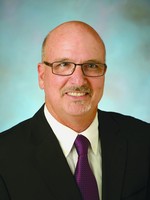By Vanessa Orr
When it comes to medical malpractice policies, what you don’t know can hurt you. While many doctors think that they are covered for most everything through a typical malpractice policy, there are a number of quite common items that are not included.
“There are three big categories that keep me up at night worrying about doctors having claims and not realizing that they have absolutely no coverage for them,” said Matt Gracey, managing director, Risk Strategies / Danna-Gracey. “While they may be licensed to take part in certain business enterprises—including medical directorships, independent medical examinations (IMEs) and expert witness work—these are not covered through typical malpractice insurance.”
With more and more physicians being asked to become medical directors of medi-spas, cosmetic clinics, sleep study institutes and more, it’s important that they have the proper coverage.
“I advise doctors to first look to the group that’s asking them to be a medical director to get the coverage from their insurer; that’s the cleanest way to do it,” said Gracey. “If that comes back as a ‘no,’ they can find a stand-alone policy to cover them.”
Gracey notes that the one exception to coverage is if a doctor is the medical director of his or her own practice or lab or in-office surgical suite, in which case they often would be covered through their own malpractice insurance policy.
Doctors who perform independent medical examinations or who serve as expert witnesses in court also need to have additional protection.
“While doctors are licensed to perform independent medical exams, which they often do at their own practice locations, they are not covered for these procedures through standard medical malpractice insurance,” said Gracey, noting that IMEs are mostly performed as a corporate demand.
“For example, if a person has a car accident, and there is a dispute about the patient’s condition, a doctor will be brought in to perform and complete an independent medical exam,” he added. “They give that report to whomever is paying for it, often an insurance company. And while a lot of doctors are doing these and it’s a nice source of income, they aren’t considering that they are often not covered through their normal malpractice insurance.”
As more doctors are asked to serve as expert witnesses, it’s important that they—and the practices for which they work—are also aware of the risks.
“I’ve watched this category grow immensely in my 25 years of helping doctors, and for the most part, doctors are doing it on the side, even when they are involved with bigger group practices,” said Gracey. “They may assume that they are covered through that practice’s malpractice insurance, but God forbid there is a claim, and they realize that there is no coverage.
“As an insurance expert, I always tell group administrators to let their doctors know in no uncertain terms that if they are moonlighting or doing work on the side, that they are not covered by their group policy and need to seek coverage elsewhere,” he added.
If a facility or group will not provide coverage for these activities, there are stand-alone policies that doctors can purchase to make sure that they are protected.
“Because there’s fairly low-risk in these three categories, stand-alone policies are not terribly expensive,” said Gracey, noting that most of these policies are written in the ‘excess and surplus lines’ sector of the insurance world, which is not governed or regulated by the Department of Insurance in each state as heavily as typical malpractice insurance.
“It’s a common gap in insurance, and it just takes some communication with your agent or broker to make sure that there’s no gap there,” said Gracey.
For more information, contact Matt Gracey at (800) 966-2120 or visit www.dannagracey.com.


























